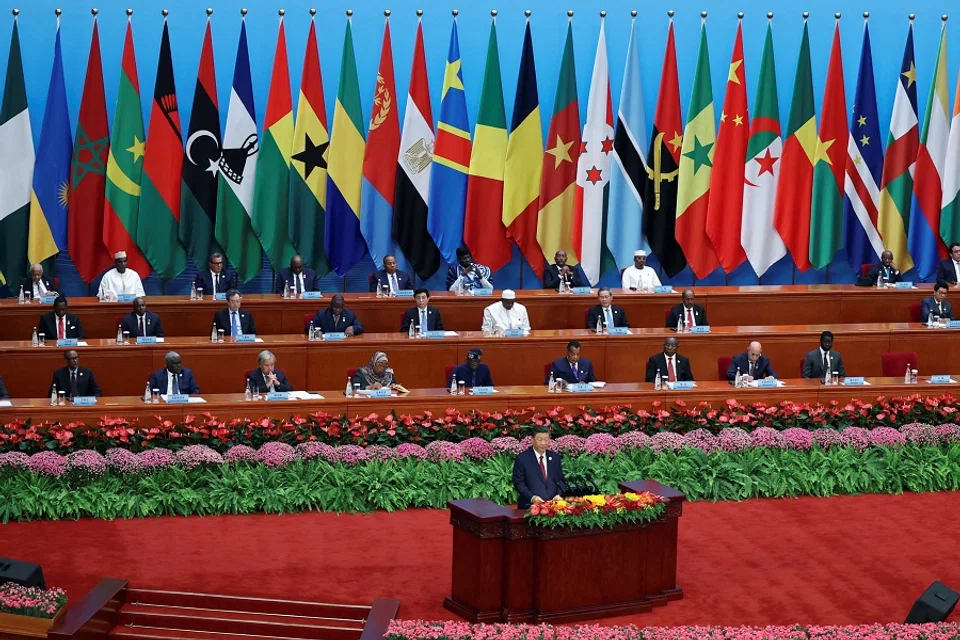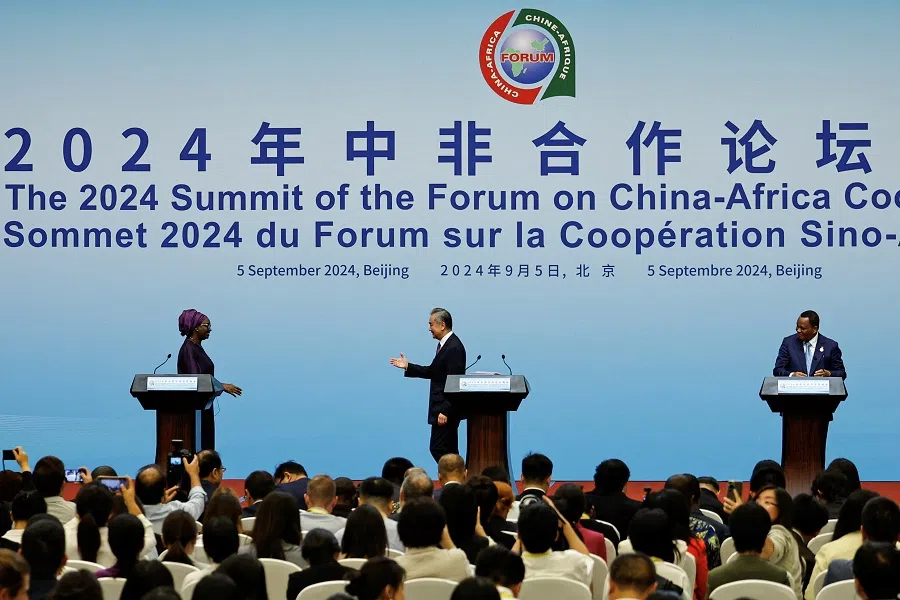China-Africa summit: Can China and Africa achieve modernisation together?
In China’s efforts to modernise and build a shared future with Africa, a key question is whether the Chinese model can be replicated elsewhere, notes academic Hao Nan. But statements from the recent Forum on China-Africa Cooperation suggest China is committed to a long-term partnership with Africa.

With the end of the 2024 edition of the Forum on China-Africa Cooperation (FOCAC) in Beijing on 6 September, China has once again reaffirmed its commitment to fostering deeper ties with Africa. Since its launch in 2000, this triennial event has symbolised China’s enduring interest in Africa’s development.
The 2024 forum, themed around the joint pursuit of a path to modernisation and a shared future, aligns with the African Union’s Agenda 2063, emphasising China’s ambition to position itself as a key partner in Africa’s industrialisation and socioeconomic transformation.
Africa is a key part of this broader strategy, alongside economic expansion into Central Asia, Southeast Asia and presumably South America...
Increasing engagements to adapt to shifting external and domestic conditions
In addition to Chinese President Xi Jinping’s pledge of US$51 billion in funding, China introduced several new initiatives: diversifying investments with “small and beautiful” projects, prioritising commercial over government loans, enhancing the role of international development banks, granting tariff-free treatment for 100% of the tariff lines of products to 33 underdeveloped African countries, promoting the issuance of ”panda bonds” (onshore renminbi-denominated debt issued in China by overseas companies), and upgrading its collective relationship with Africa through proactive security measures. These moves, accompanied by promises of infrastructure support and job creation, underscore China’s commitment albeit in a more cautious way.
China’s evolving strategy reflects its response to growing rivalry with the West. As the US and EU pursue decoupling and de-risking strategies, marked by punitive tariffs, legal scrutiny and economic sanctions, China anticipates limited future cooperation with Western economies.
Domestic economic pressures, including low consumption, a real estate bubble, youth unemployment and an ageing population, are driving the Chinese government to secure alternatives. The urgency of this search further heightened following the Third Plenum of the 20th Central Committee of the Chinese Communist Party (CCP), which promised a moderately advanced nation, at least partially justifying Xi Jinping’s longer governance amid criticism of the handling of Covid-19.
China is also leveraging international financial and economic practices to support its African expansion.
Managing investment risks while boosting influence
Recent trade data indicates that China’s alignment with the global south has mitigated the effects of Western decoupling efforts. Africa is a key part of this broader strategy, alongside economic expansion into Central Asia, Southeast Asia and presumably South America, as seen in the China-MERCOSUR (Southern Common Market) free trade agreement negotiations and Xi’s upcoming visits to Peru and Brazil for the APEC and G20 summits in November.
China is also leveraging international financial and economic practices to support its African expansion. By allocating part of its US$51 billion commitment to institutions like the World Bank, while reserving some funds for government loans and development aid, Beijing gains flexibility in managing investment risks. Prioritising commercial loans allows China to justify repayment demands with commercial logic, reducing political friction. This, combined with small, impactful projects, aims to secure public support in host countries and counter Western criticism.
Additionally, unilateral tariff-free treatment, alongside Chinese infrastructure projects and intergovernmental agreements benefiting Africa, reduces trade barriers, boosts African economies, and embeds Chinese private investment and manufacturing into Africa’s economic structure. Such initiatives may set new precedents in international development practice, elevating China’s global standing and pressuring other industrialised countries to follow suit.
Promoting the Chinese path to modernisation
At the heart of this renewed China-Africa cooperation is Xi Jinping’s vision of the ”Chinese path to modernisation”. This strategy, rooted in the economic reforms initiated by Deng Xiaoping in the late 1970s, has evolved into a distinctly Chinese model of development. Combining state-led industrialisation with selective market reforms, it rejects the laissez-faire approach of Western neoliberalism.
In Africa, this model is presented not just as a pathway to growth but as an equitable and inclusive form of modernisation that takes into account the continent’s unique needs and historical context. By elevating its relationships with all African nations to the strategic level, China signals its intention to embed itself more deeply in Africa’s long-term development trajectory.
The success of China’s engagement with Africa in jointly pursuing modernisation and a shared future raises the question of whether the Chinese model is replicable in other countries...

China’s over four decades of development experience, now rebranded as the Chinese path to modernisation, offer convincing evidence for Africa as it aims for revitalisation by 2063. One key pillar is its emphasis on common prosperity, a goal closely aligned with the needs of many African nations.
As African countries seek to lift millions out of poverty and build inclusive economies, China’s development assistance, trade partnerships and infrastructure investments can play a crucial role. In fact, China-Africa trade has grown nearly 26-fold from US$10.5 billion in 2000 to US$282.1 billion in 2023.
Seen as threat to the West
Chinese investments in Africa, which have expanded from less than US$500 million in 2000 to over US$40 billion today, have facilitated the construction of critical infrastructure, including 100,000 kilometres of roads, over 10,000 kilometres of railways, and hundreds of bridges and ports across the continent.
The success of China’s engagement with Africa in jointly pursuing modernisation and a shared future raises the question of whether the Chinese model is replicable in other countries, given the unique characteristics of the Chinese system, particularly its strong state capacity.
Nevertheless, linking China’s moves with the domestic challenges in the West, including societal divisions and constrained growth prospects, the Chinese path to modernisation becomes particularly attractive. This, however, may further extend the global strategic rivalry between China and the West into Africa, as China’s expansive economic presence naturally poses challenges to the region that has been historically dominated by Western powers.
For African nations, the promise of infrastructure development, job creation, and military support is enticing, but leaders must ensure their countries do not become overly reliant on Chinese investments. As Africa seeks to chart its own course toward modernisation, the challenge will be to engage with China on terms that promote sustainable development and respect for sovereignty.
Whether China’s path to modernisation can serve as a genuine alternative to Western models remains to be seen, but the relationship between China and Africa is entering a new phase — one that could shape the future of both regions for decades to come.





